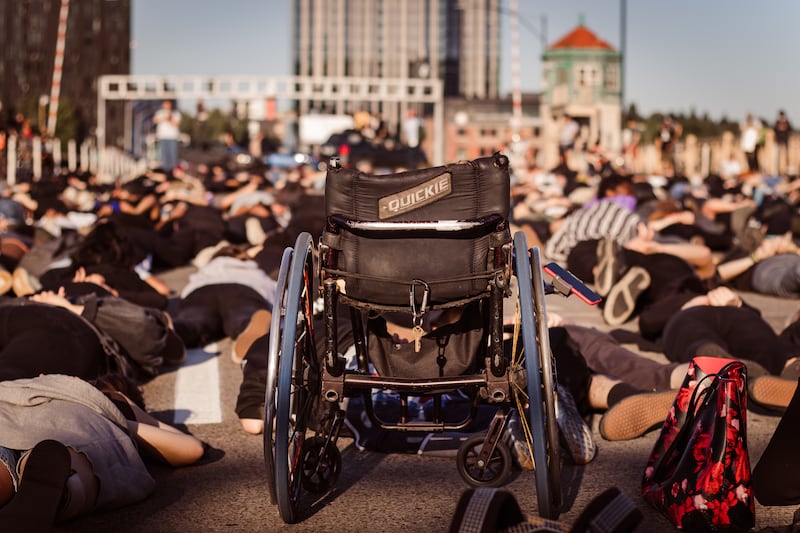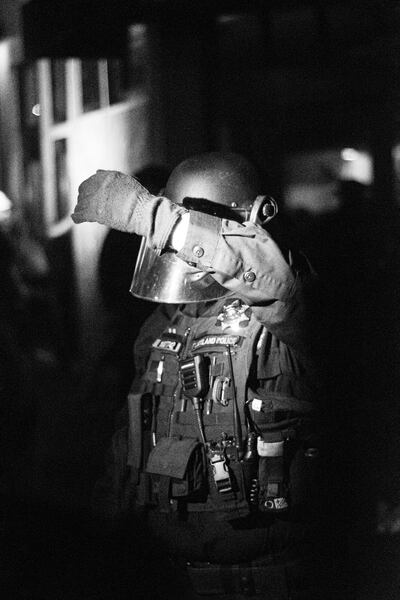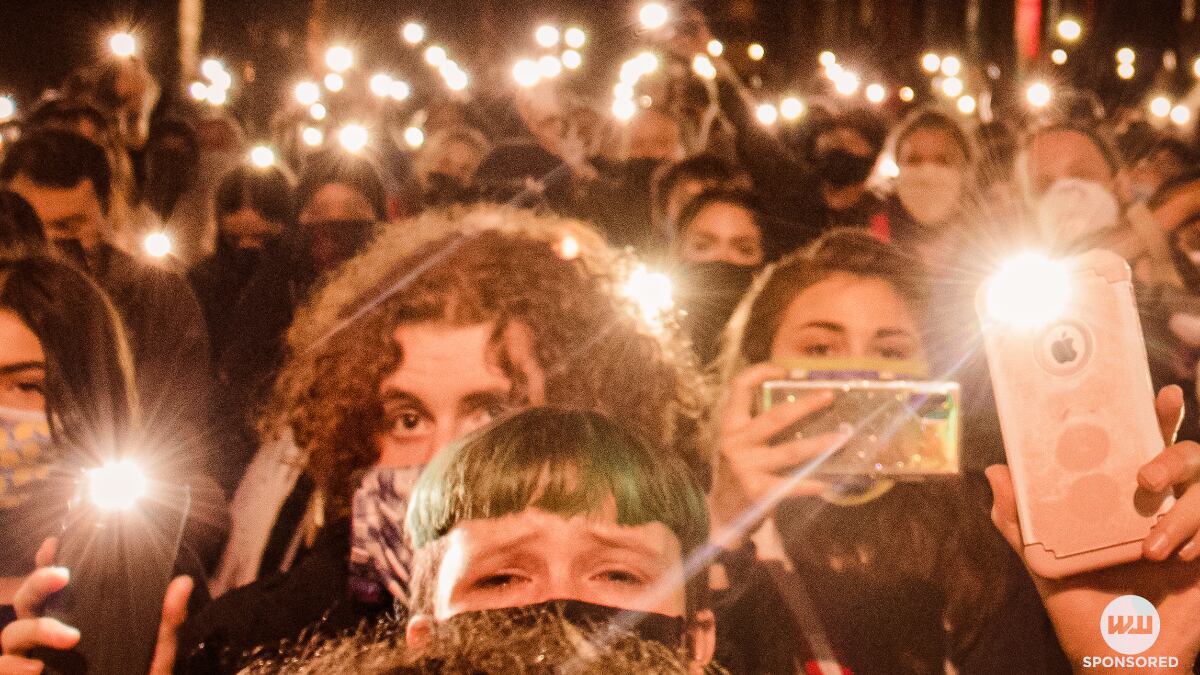Sponsored Content presented by Portland Art Museum
During the summer of 2020, Portland photographer Mariah Harris attended more than 75 Black Lives Matters protests, bagging over a thousand pictures in the process. The schedule was grueling. She would sleep during the day, wake up and attend a protest, then go work the graveyard shift at her night job, editing photos in the wee hours.
“And that’s what I did for like two straight months,” says Harris. “Sleep, rinse, repeat.” She describes the process as “brutal, but empowering.”
Now some of Harris’ photos hang on the walls of the Portland Art Museum. The new exhibition, “Perspectives,” which opened July 16 and runs through November 13, features more than 60 works by local BIPOC photographers captured during Portland’s Black Lives Matter protests, which occurred almost daily during summer 2020. The exhibition presents a nuanced look back at the protests, which garnered national media coverage, and invites museum-goers to reflect on what was one of Portland’s most transformational summers.
Two years ago, however, a PAM exhibition was not at all on Harris’ radar. Harris’ background is in family portraits and boudoir photography. The protests were new territory for Harris as a photographer, but she came into it naturally.
“I was covering the protests for my own basis,” says Harris, “Through the lens of me as a biracial Black woman. Because a lot of these news agencies unfortunately were hiring white photographers. And it’s very important to see Black Lives Matter through the lens of Black people.”
For Harris, this lens meant capturing the “emotion” of the protests and not focusing solely on the police brutality that was nevertheless a reality. One of Harris’ photographs featured in the exhibit depicts a sea of people lying prone on the Burnside Bridge. The “Die-In” lasted eight minutes and 46 seconds: the amount of time George Floyd was held on the ground before his murder. The entire crowd was silent, says Harris; she recalls seeing people in tears.

“It was just a very emotional moment that people were connecting to,” says Harris. “And then I remember just going by and seeing this empty wheelchair.”
At the center of the photograph is an unoccupied wheelchair. The arresting image of an empty wheelchair in the foreground before a pronated crowd circulated on social media. Harris ended up meeting the man to whom the wheelchair belonged after he saw the photograph on Harris’ Instagram. Harris learned that he, too, was a regular at the protests.
While Harris strove to document the pathos of the Black Lives Matter protests, other photographers featured in “Perspectives” offer different points of view. Daveed Jacobo is one example: Their striking black and white prints are intentional documentations of police brutality.
“I had seen a lot of photographs that were very up close and personal,” says Jacobo. “I wanted the bigger picture.”
One photograph, titled Who Do You Serve, shows a Portland Police Officer dressed in riot gear, their left arm raised to block a scintillating light. The arm covers the officer’s eyes, already hidden behind a protective visor, rendering the officer entirely anonymous—less an individual than a “uniform.”

Jacobo says they would approach the protests from a distance, sometimes searching for higher ground or shooting from atop a garbage can in order to get that bigger picture. But regardless of the scenes Jacobo captured, they don’t think of their work as photojournalism.
“I saw violence happening and I would take a picture of it,” says Jacobo. “It was just spur of the moment. I just wanted to somehow help.”
Aside from their role as a photographer, Jacobo was instrumental in bringing the different artists at the PAM exhibit together. Encouraged by a co-worker who was an admirer of Jacobo’s photography, Jacobo reached out to a number of local photographers. Many of those artists now have work included in “Perspectives,” and the group offers museum-goers tips on how to engage with the work on display.
“We ask that you follow along this journey, relive these moments, listen to the stories shared, and open yourself up to the perspectives represented,” the artists write in a joint statement. With the summer of 2020 now two years in the past, it’s an appropriate time to heed that advice and revisit the period with a fresh set of eyes.
The Museum is open Wednesday through Sunday, 10 a.m. to 5 p.m. Tickets available online and onsite, and kids under 17 are always free.
Learn more about the exhibit and plan your visit at this link.
